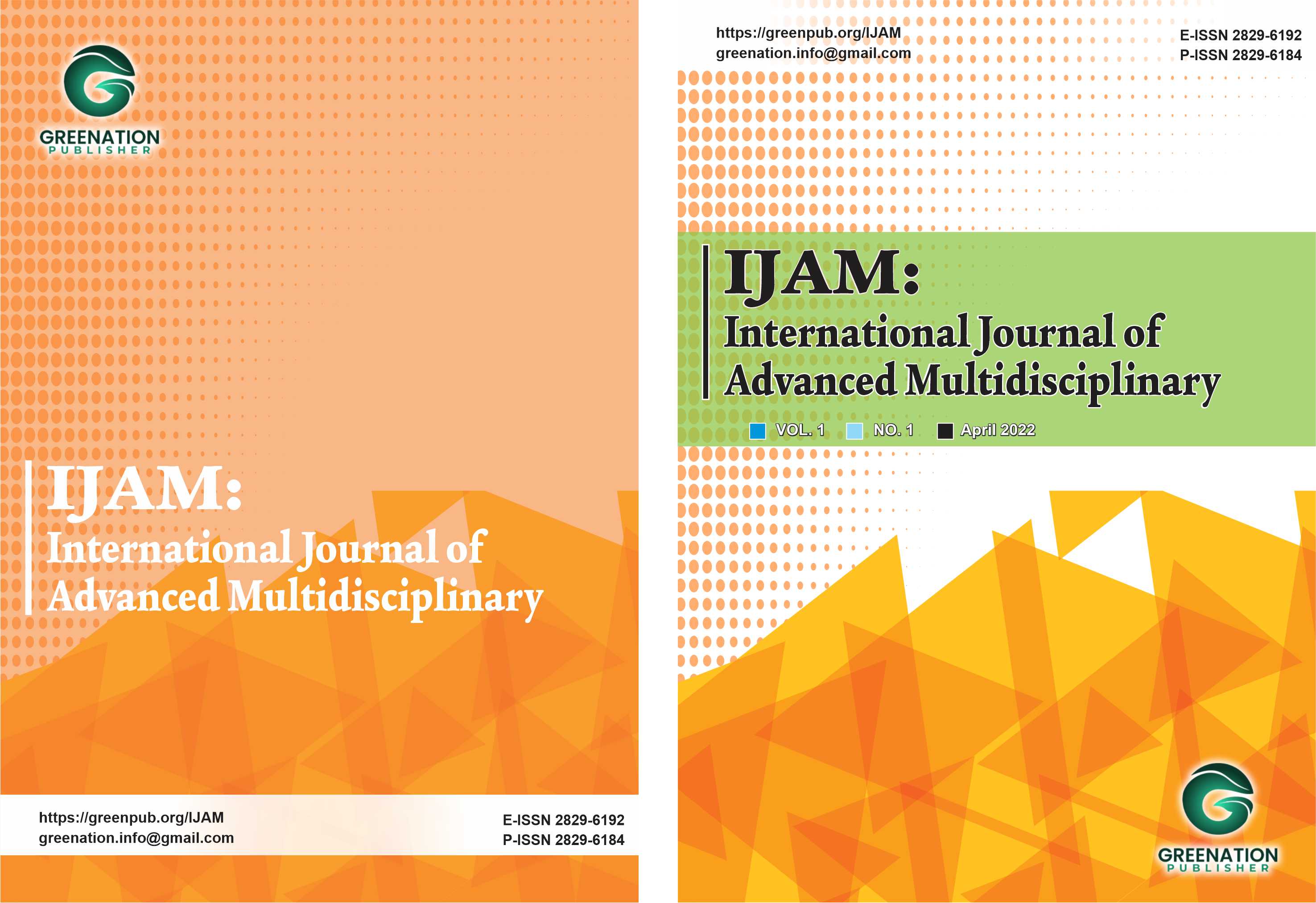Supercapacitor Implementation To Prototype Energy Storage System Optimizer in PV System
DOI:
https://doi.org/10.38035/ijam.v2i4.437Keywords:
PV System, Supercapacitor, Battery, Storage Energy SystemAbstract
This research aims to create a prototype of an energy storage optimizer in a PV system using a supercapacitor in combination with batteries. The purpose of adding supercapacitors in this prototype is to maintain battery usage when there is a change in irradiation with a loading source that refers to the amount of electrical current and voltage as a supply of energy. A sudden increase in load without an energy buffer component can affect battery endurance. This can result in a decrease in electrical energy supply. Based on experimental results, it has been found that the battery and supercapacitor complement each other. The battery works more statically while the supercapacitor works more dynamically. Thus, the power output to the load is more stable, and the battery can be more durable because when there are extreme changes in irradiation and load, they can be overcome by supercapacitors.
References
A. S. Al-Ezzi and M. N. M. Ansari. 2022. “Photovoltaic Solar Cells: A Review,” Applied System Innovation, vol. 5, no. 4, p. 67, doi: 10.3390/asi5040067.
Aditya Setiadi Putra. 2018. Desain dan Simulasi Sistem Penyimpanan Energi Hybrid Menggunakan Superkapasitor dan Baterai Pada Pembangkit Listrik Tenaga Surya. Thesis. Surabaya: Institut Teknologi Sepuluh Nopember Surabaya.
Dewa Gde Santika, Ig. Prasetya Dwi Wibawa, and Rizki Ardianto.P. 2020. “Desain Dan Implementasi Superkapasitor Sebagai Buffer Storage Baterai,” e-Proceeding of Engineering , vol. 7, no. 1.
F. Naseri, S. Karimi, E. Farjah, and E. Schaltz. 2022. “Supercapacitor management system: A comprehensive review of modeling, estimation, balancing, and protection techniques,” Renewable and Sustainable Energy Reviews, vol. 155, p. 111913, doi: 10.1016/j.rser.2021.111913.
F. Wang, X.-K. Liu, and F. Gao, “Fundamentals of Solar Cells and Light-Emitting Diodes. 2019. ” in Advanced Nanomaterials for Solar Cells and Light Emitting Diodes, Elsevier, pp. 1–35. doi: 10.1016/B978-0-12-813647-8.00001-1.
I. Baccouche, S. Jemmali, B. Manai, N. Omar, and N. Amara. 2017. “Improved OCV Model of a Li-Ion NMC Battery for Online SOC Estimation Using the Extended Kalman Filter,” Energies (Basel), vol. 10, no. 6, p. 764, doi: 10.3390/en10060764.
M. E. Glavin., P. K. W. Chan., S. Armstrong, and W. G. Hurley. 2008. “A stand-alone photovoltaic supercapacitor battery hybrid energy storage system,” in 2008 13th International Power Electronics and Motion Control Conference, IEEE, pp. 1688–1695. doi: 10.1109/EPEPEMC.2008.4635510.
M. E. ?ahin and F. Blaabjerg. 2020. “A Hybrid PV-Battery/Supercapacitor System and a Basic Active Power Control Proposal in MATLAB/Simulink,” Electronics (Basel), vol. 9, no. 1, p. 129, doi: 10.3390/electronics9010129.
M. Khalid. 2019. “A Review on the Selected Applications of Battery-Supercapacitor Hybrid Energy Storage Systems for Microgrids,” Energies (Basel), vol. 12, no. 23, p. 4559, doi: 10.3390/en12234559.
M. ?ahin, F. Blaabjerg, and A. Sangwongwanich. 2022. “A Comprehensive Review on Supercapacitor Applications and Developments,” Energies (Basel), vol. 15, no. 3, p. 674, doi: 10.3390/en15030674.
M. Salanne, “Ionic Liquids for Supercapacitor Applications. 2017. ” Top Curr Chem, vol. 375, no. 3, p. 63, doi: 10.1007/s41061-017-0150-7.
R. P. Smith, A. A.-C. Hwang, T. Beetz, and E. Helgren. 2018. “Introduction to semiconductor processing: Fabrication and characterization of p-n junction silicon solar cells,” Am J Phys, vol. 86, no. 10, pp. 740–746, doi: 10.1119/1.5046424.
S. Jafari, Z. Shahbazi, Y.-C. Byun, and S.-J. Lee. 2022. “Lithium-Ion Battery Estimation in Online Framework Using Extreme Gradient Boosting Machine Learning Approach,” Mathematics, vol. 10, no. 6, p. 888, doi: 10.3390/math10060888.
S. O. Amrouche, D. Rekioua, and T. Rekioua. 2015. “Overview of energy storage in renewable energy systems,” in 2015 3rd International Renewable and Sustainable Energy Conference (IRSEC), IEEE, pp. 1–6. doi: 10.1109/IRSEC.2015.7454988.
W. Jing, C. Hung Lai, S. H. W. Wong, and M. L. D. Wong. 2017. “Battery?supercapacitor hybrid energy storage system in standalone DC microgrids: areview,” IET Renewable Power Generation, vol. 11, no. 4, pp. 461–469, doi: 10.1049/iet-rpg.2016.0500.
W. Zhou, Y. Zheng, Z. Pan, and Q. Lu. 2021. “Review on the Battery Model and SOC Estimation Method,” Processes, vol. 9, no. 9, p. 1685, doi: 10.3390/pr9091685.
X. Zhang, J. Hou, Z. Wang, and Y. Jiang. 2022. “Study of SOC Estimation by the Ampere-Hour Integral Method with Capacity Correction Based on LSTM,” Batteries, vol. 8, no. 10, p. 170, doi: 10.3390/batteries8100170.
Z. S. Iro, C. Subramani, and S. S. Dash. 2016. “A Brief Review on Electrode Materials for Supercapacitor,” Int J Electrochem Sci, vol. 11, no. 12, pp. 10628–10643, doi: 10.20964/2016.12.50.
Downloads
Published
How to Cite
Issue
Section
License
Copyright (c) 2024 Muhamad Zakaria, Abdul Multi, Agus Sofyan

This work is licensed under a Creative Commons Attribution 4.0 International License.
Authors who publish their manuscripts in this journal agree to the following conditions:
- The copyright on each article belongs to the author(s).
- The author acknowledges that the International Journal of Advanced Multidisciplinary (IJAM) has the right to be the first to publish with a Creative Commons Attribution 4.0 International license (Attribution 4.0 International (CC BY 4.0).
- Authors can submit articles separately, arrange for the non-exclusive distribution of manuscripts that have been published in this journal into other versions (e.g., sent to the author's institutional repository, publication into books, etc.), by acknowledging that the manuscript has been published for the first time in the International Journal of Advanced Multidisciplinary (IJAM).























